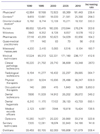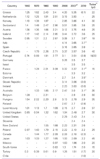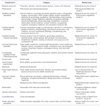Abstract
Figures and Tables
 | Figure 1The number of practising physicians per 1,000 inhabitants (From Organization for Economic Cooperation and Development. OECD factbook 2011-2012: economic, environmental and social statistics [Internet]. Paris: OECD Publishing; 2011) [2]. |
 | Figure 2Distribution of physicians as a percentage of total physicians (2009 or latest available year) (From Organization for Economic Cooperation and Development. OECD factbook 2011-2012: economic, environmental and social statistics [Internet]. Paris: OECD Publishing; 2011) [2]. |
 | Figure 3The number of practising nurses per 1,000 inhabitants (From Organization for Economic Cooperation and Development. OECD factbook 2011-2012: economic, environmental and social statistics [Internet]. Paris: OECD Publishing; 2011) [2]. |
 | Figure 4Ratio of nurses to physicians (2009 or latest available year) (From Organization for Economic Cooperation and Development. OECD factbook 2011-2012: economic, environmental and social statistics [Internet]. Paris: OECD Publishing; 2011) [2]. |
Table 2

Values are presented as number or %.
From Ministry of Health and Welfare. Ministry of Health and Welfare year book 2011. Seoul: Ministry of Health and Welfare; 2012 [3].
a)Licensed physicians (dentists and oriental medical doctors) = physicians (dentists and oriental medical doctors) + conditionally qualified limited physicians (dentists and oriental medical doctors).
Table 3

a)Countries are ranked highest to lowest number in 2007.
b)Be approximated the period which the number of practicing physicians per 1,000 population within 1960 to 2010 have increased twice.
c)2009/d)2011 available year, ( ) estimate according to Figure 1.
From Organization for Economic Cooperation and Development. OECD factbook 2011-2012: economic, environmental and social statistics [Internet]. Paris: OECD Publishing; 2011 [2].
Table 4

Values are presented as %.
From Healthcare Future Commission, Ministry of Health and Welfare; Korea Institute for Health and Social Affairs. 2020 Vision and policy initiative of healthcare in Korea: Healthcare Future Commission action report. Seoul: Korea Institute for Health and Social Affairs; 2011 [9].




 PDF
PDF ePub
ePub Citation
Citation Print
Print



 XML Download
XML Download